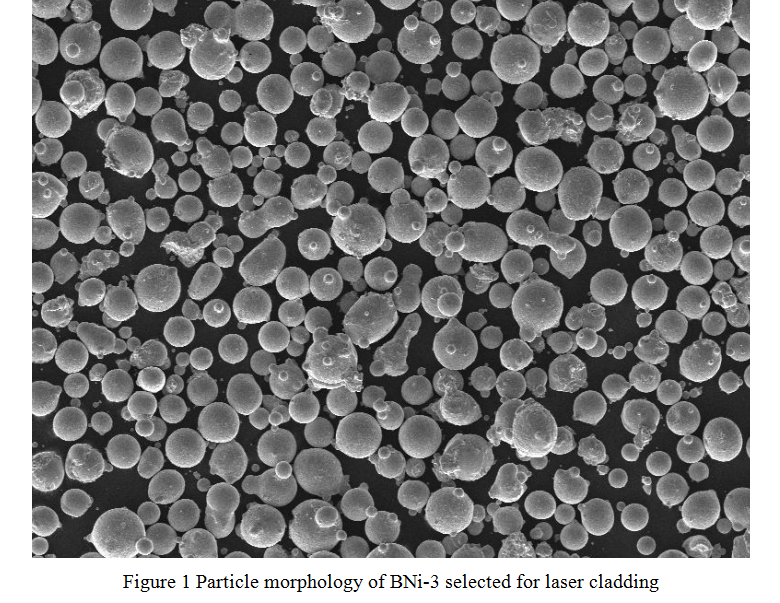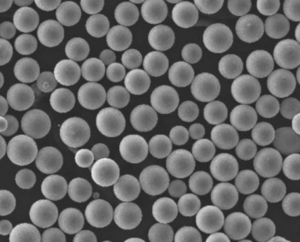Pó de FeCoNiCrAl— parece complexo, não é? É uma das estrelas em ascensão na metalurgia avançada e na ciência dos materiais. Esta liga versátil faz parte de um grupo conhecido como ligas de alta entropia (HEAs), celebradas por suas notáveis propriedades mecânicas e estabilidade em condições extremas. Mas por que está ganhando tanta atenção? Vamos nos aprofundar neste material intrigante, seus recursos exclusivos e suas aplicações.
Visão geral do pó de FeCoNiCrAl
O pó de FeCoNiCrAl é uma liga de alta entropia composta principalmente de ferro (Fe), cobalto (Co), níquel (Ni), cromo (Cr) e alumínio (Al). Essas ligas são especiais porque equilibram múltiplos elementos principais em proporções quase iguais, levando a uma variedade de propriedades fascinantes, como alta resistência, resistência à corrosão e estabilidade térmica.
| Principais recursos | Detalhes |
|---|---|
| Composição | Ferro (Fe), Cobalto (Co), Níquel (Ni), Cromo (Cr), Alumínio (Al) |
| Principais características | Alta resistência, resistência à corrosão, estabilidade térmica, ductilidade |
| Formulários | Aeroespacial, automotivo, energia, biomédico e fabricação aditiva |
| Ponto de venda exclusivo | Propriedades excepcionais derivadas da estabilidade impulsionada pela entropia |

Composição de Pó de FeCoNiCrAl
Ligas de alta entropia como FeCoNiCrAl são baseadas no conceito de estabilização por entropia. Ao misturar vários metais em proporções quase iguais, eles formam uma solução sólida de fase única em vez de se segregarem em fases separadas. Aqui está uma análise:
| Elemento | Função |
|---|---|
| Ferro (Fe) | Aumenta a resistência e a durabilidade |
| Cobalto (Co) | Fornece propriedades magnéticas e estabilidade de temperatura |
| Níquel (Ni) | Aumenta a tenacidade e a resistência à corrosão |
| Cromo (Cr) | Melhora a resistência à corrosão e à oxidação |
| Alumínio (Al) | Contribui para a resistência à oxidação e propriedades leves |
Esta mistura específica cria uma liga harmoniosa com um equilíbrio de propriedades mecânicas, térmicas e químicas.
Características do pó de FeCoNiCrAl
O que torna o pó de FeCoNiCrAl tão especial? Não é apenas mais uma liga — é um divisor de águas para materiais em ambientes extremos. Vamos destacar suas características de destaque.
| Característica | Descrição |
|---|---|
| Alta resistência | Mais forte do que as ligas tradicionais, capaz de suportar altas cargas mecânicas. |
| Estabilidade térmica | Mantém a integridade estrutural em temperaturas elevadas. |
| Resistência à corrosão | Excelente resistência contra ambientes oxidantes e corrosivos. |
| Ductilidade | Fornece flexibilidade, reduzindo o risco de falha frágil. |
| Leve | Mais leve do que muitas ligas convencionais, reduzindo o consumo de energia em aplicações como aeroespacial. |
| Resistência ao desgaste | Resiste à fricção e ao desgaste mecânico melhor do que muitas ligas tradicionais. |
Tipos de pós de FeCoNiCrAl
É aqui que fica ainda mais interessante. Os pós de FeCoNiCrAl vêm em vários graus, adaptados para aplicações específicas. Abaixo está uma lista de pelo menos dez modelos específicos, destacando seus recursos exclusivos.
| Modelo | Recursos exclusivos |
|---|---|
| FeCoNiCrAl-1 | Grau de uso geral com propriedades mecânicas balanceadas. |
| FeCoNiCrAl-2 | Resistência à corrosão aprimorada, ideal para ambientes marinhos. |
| FeCoNiCrAl-Ti | Incorpora titânio para maior tenacidade e resistência ao desgaste. |
| FeCoNiCrAl-Nb | Contém nióbio para desempenho superior em altas temperaturas. |
| FeCoNiCrAl-Cu | Adição de cobre para condutividade térmica e elétrica aprimorada. |
| FeCoNiCrAl-B | Boro aprimorado para melhor refinamento de grãos e estabilidade mecânica. |
| FeCoNiCrAl-N | Estabilizado com nitrogênio para resistência excepcional sob altas taxas de deformação. |
| FeCoNiCrAl-H | Grau resistente ao hidrogênio para armazenamento de hidrogênio e aplicações de células de combustível. |
| FeCoNiCrAl-Si | Adição de silício para maior resistência à oxidação em temperaturas ultra-altas. |
| FeCoNiCrAl-W | Variante enriquecida com tungstênio para resistência superior ao desgaste e fluência. |






Aplicativos de Pó de FeCoNiCrAl
A versatilidade do pó de FeCoNiCrAl significa que ele é útil em uma ampla gama de indústrias. Vamos explorar onde ele se destaca mais:
| Setor | Aplicativo |
|---|---|
| Aeroespacial | Lâminas de turbina, componentes de foguetes e escudos térmicos. |
| Automotivo | Peças leves e resistentes à corrosão para veículos de alto desempenho. |
| Energia | Trocadores de calor, componentes de usinas e armazenamento de hidrogênio. |
| Biomédico | Implantes e próteses, graças à sua biocompatibilidade. |
| Manufatura Aditiva | Técnicas de fusão em leito de pó como SLM (Selective Laser Melting) e EBM (Electron Beam Melting). |
| Defesa | Componentes de blindagem e hardware militar crítico. |
| Eletrônicos | Contactos elétricos de alto desempenho e sistemas de gestão térmica. |
Vantagens do Pó de FeCoNiCrAl
Porque escolher o pó de FeCoNiCrAl em vez de outros materiais? Vamos analisar:
| Vantagens | Por que é importante |
|---|---|
| Resistência superior | Desempenha melhor sob stress em comparação com as ligas convencionais. |
| Alta versatilidade | Adequado para condições de calor extremo e criogénicas. |
| Resistência à corrosão | Dura mais tempo em ambientes agressivos, reduzindo os custos de manutenção. |
| Composição adaptável | Pode ser adaptado para necessidades específicas, ajustando sua composição elementar. |
| Ecologicamente correto | Potencial para reduzir o uso de recursos devido à sua longa vida útil e capacidade de reciclagem. |
Especificações e padrões
Para garantir um desempenho consistente, Pó de FeCoNiCrAl é produzido sob especificações rigorosas.
| Especificação | Detalhes |
|---|---|
| Faixa de tamanho do pó | 15–45 µm, 45–105 µm (comum para manufatura aditiva). |
| Pureza | ≥ 99,9% |
| Padrões | ISO 9001, ASTM F3049 (para manufatura aditiva). |
| Densidade | ~7,9 g/cm³ |

Fornecedores e preços
Encontrar o fornecedor certo é crucial. Abaixo estão alguns fornecedores populares, juntamente com detalhes de preços aproximados.
| Fornecedor | Região | Preços | Notas |
|---|---|---|---|
| AMETEK Specialty | EUA | $250–350/kg | Pós de alta qualidade para a indústria aeroespacial. |
| Höganäs AB | Europa | $200–300/kg | Fornecedor confiável com presença global. |
| Materiais Sandvik | Global | $220–320/kg | Renomado pela consistência no tamanho do pó. |
| Aditivo Carpenter | EUA | $230–330/kg | Foco em pós para manufatura aditiva. |
perguntas frequentes
| Pergunta | Resposta |
|---|---|
| O que é pó de FeCoNiCrAl? | Uma liga de alta entropia feita de ferro, cobalto, níquel, cromo e alumínio. |
| Quais são suas principais aplicações? | Usado nas indústrias aeroespacial, automotiva, de energia e biomédica, entre outras. |
| Por que é chamada de liga de alta entropia? | Porque equilibra múltiplos elementos principais em proporções iguais ou quase iguais. |
| Como se compara às ligas tradicionais? | Oferece resistência superior, resistência à corrosão e estabilidade térmica. |
| É adequado para impressão 3D? | Sim, é amplamente utilizado em técnicas de manufatura aditiva de leito de pó. |

